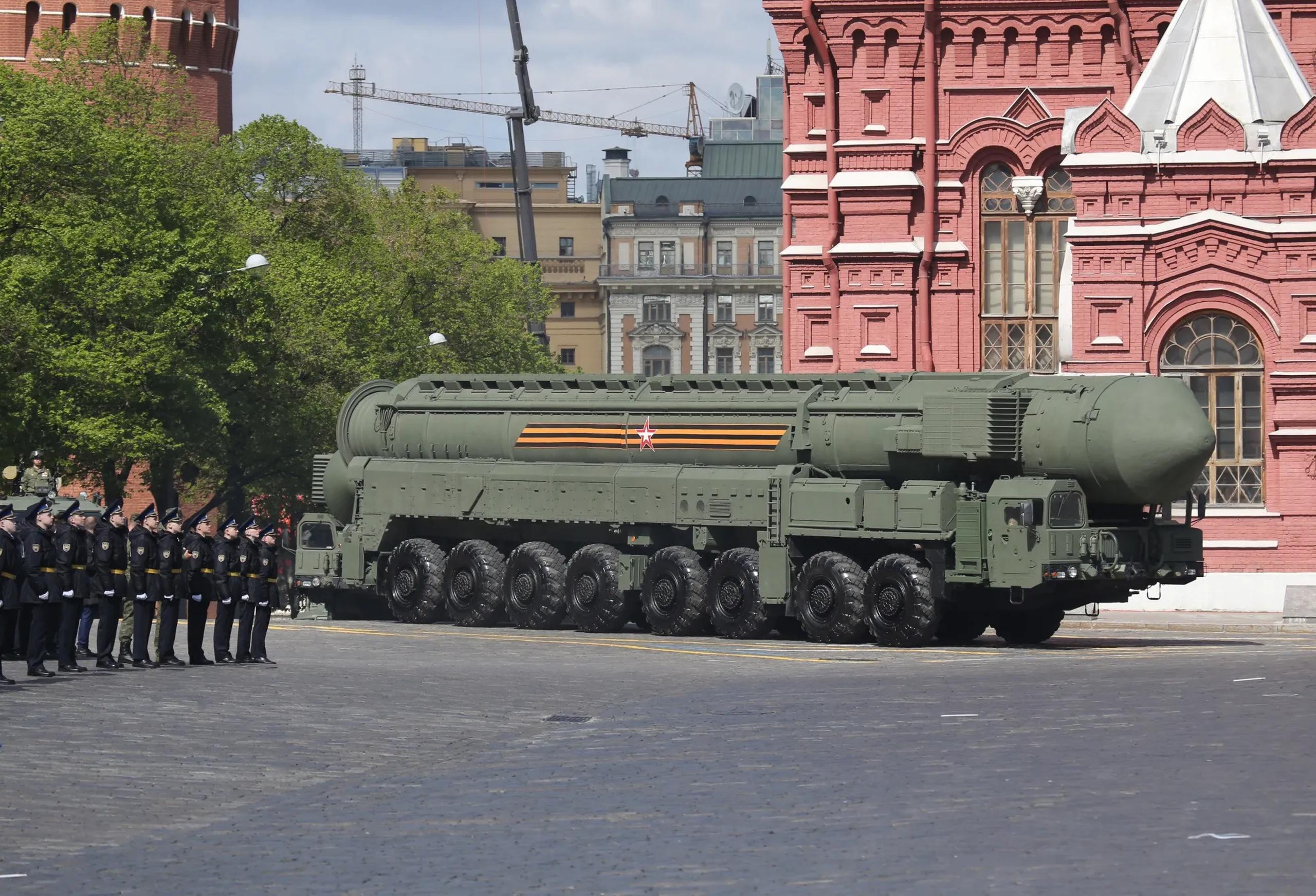An antenna farm is set up away from soldiers inside the command post. (Breaking Defense/ Ashley Roque)
WASHINGTON — In what has turned out as Army Secretary Christine Wormuth’s fourth and final year as the service’s top civilian leader and Gen. Randy George’s first full year as chief of staff, the duo shed high-profile modernization programs, revamped others and pushed tech down to soldiers at a faster clip.
Wormuth, slated to wave goodbye to her post as the 25th secretary of the Army in January 2025, largely spent her tenure keeping the service’s high-profile modernization portfolio intact. This year, though, the axe fell on several initiatives starting with the early February aviation shakeup that ended development on the next generation Future Attack Reconnaissance Aircraft (FARA), kept General Electric’s Improved Turbine Engine Program (ITEP) in the development phase longer, and shelved legacy Shadow and Raven unmanned aerial systems.
“We are learning from the battlefield — especially Ukraine — that aerial reconnaissance has fundamentally changed,” Army Chief Gen. Randy George said in a press release at the time. “Sensors and weapons mounted on a variety of unmanned systems and in space are more ubiquitous, further reaching and more inexpensive than ever before.”
In turn, the service is planning to spend dollars freed up by those decisions to ink a multi-year procurement deal with Lockheed-Sikorsky for the UH-60M Blackhawk line, give Boeing the greenlight to formally begin production on the CH-47F Block II Chinook, buy new drones and more.
[This article is one of many in a series in which Breaking Defense reporters look back on the most significant (and entertaining) news stories of 2024 and look forward to what 2025 may hold.]
The axe officially dropped on another big-ticket development effort just a few weeks later when the Army unfurled its fiscal 2025 budget request: It was halting development on its Extended Range Cannon Artillery (ERCA) platform. The goal was to use the modified artillery platform to launch 155-mm rounds out to 70km, an increase from the current max range of up to 30km. But after spending several years integrating and testing out the addition of a 30-foot, 58-caliber gun tube to BAE Systems’ Paladin M109A7 self-propelled howitzer, it was not working out as planned.
However, the requirement for such a weapon remains and the service subsequently announced it has selected five companies — Rheinmetall, BAE Systems, Hanwha, General Dynamics and Elbit Systems — to demo their existing platforms on a roadshow of sorts. In early December, the director of the Long-Range Precision Fires Cross Functional Team, Brig. Gen. Rory Crooks, said those early evaluations should be completed by month’s end. And, he added, so far so good, with early findings indicating that the vendors are “absolutely ready for competitive evaluation,” which means the service may decide not to delve into another lengthy development phase.
“We’re very pleased with what we’re seeing so far, and even some on the autonomy side,” the one-star general told an audience Dec. 3.
Eyeing soldiers’ kit, the service also spent part of the year preparing industry for a possible shake up to its portfolio of night vision devices including the mixed-reality goggles dubbed the Integrated Visual Augmentation System (IVAS). Army Rangers from the 75th Ranger Regiment, for example, were tasked with running Microsoft’s most advanced mixed-reality system, IVAS version 1.2, through the ringer alongside dedicated night vision systems like the Enhanced Night Vision Goggle-Binocular (ENGV-B) and another system dubbed PVS-14.
“They’re going to provide the best feedback in terms of, here’s what the ENGV-B can provide versus a PVS-14 versus the capability inside of IVAS,” an Army official told Breaking Defense. The goal is for those Rangers to provide a “more mature look” at how they use night vision while also answering questions about the ideal IVAS form factor, battery needs and more.
Those answers are expected to help Army leaders decide the best pair up specific night vision devices with units and define IVAS Next requirements for an upcoming competition.
And when it comes to tying everything together, Army leaders also unveiled plans for command and control (C2) Next, or Next Generation C2. Still in the early days of development, this new prototyping umbrella is slated to include: a single array; a line-of-sight and beyond line-of-sight terminal; modular RF communications software; and edge computing capabilities. Service leaders are planning to test it out next year at the fifth Project Convergence capstone event to make sure they’re on the right track.
Individual programs aside, George rolled out his “transformation in contact” push this year — an initiative designed to get developmental weapons into soldiers’ hands sooner and tweak how formations are organized.
George announced plans to expand his keystone inactive beyond infantry under a 2.0 push. The plan, he said, expands the bottom-up approach to two divisions, two Armored brigade combat teams, two Stryker brigade combat teams, and reserve and guard formations. The service started with the 2nd Brigade, 101st Airborne Division, 2nd Light Brigade Combat Team of the 25th Infantry Division and 3rd Brigade, 10th Mountain Division. Next year, it will be expanded beyond infantry under a 2.0 push and will include two divisions, two Armored brigade combat teams, two Stryker brigade combat teams, and reserve and guard formations.





















Discussion about this post